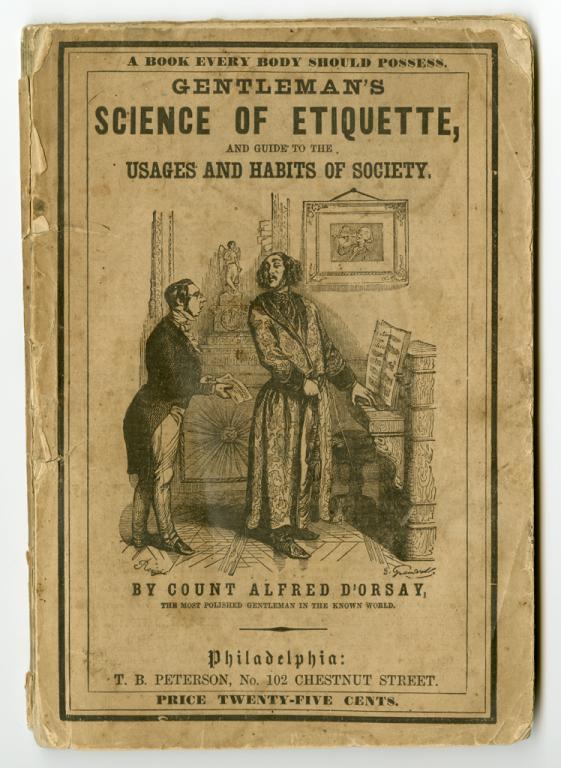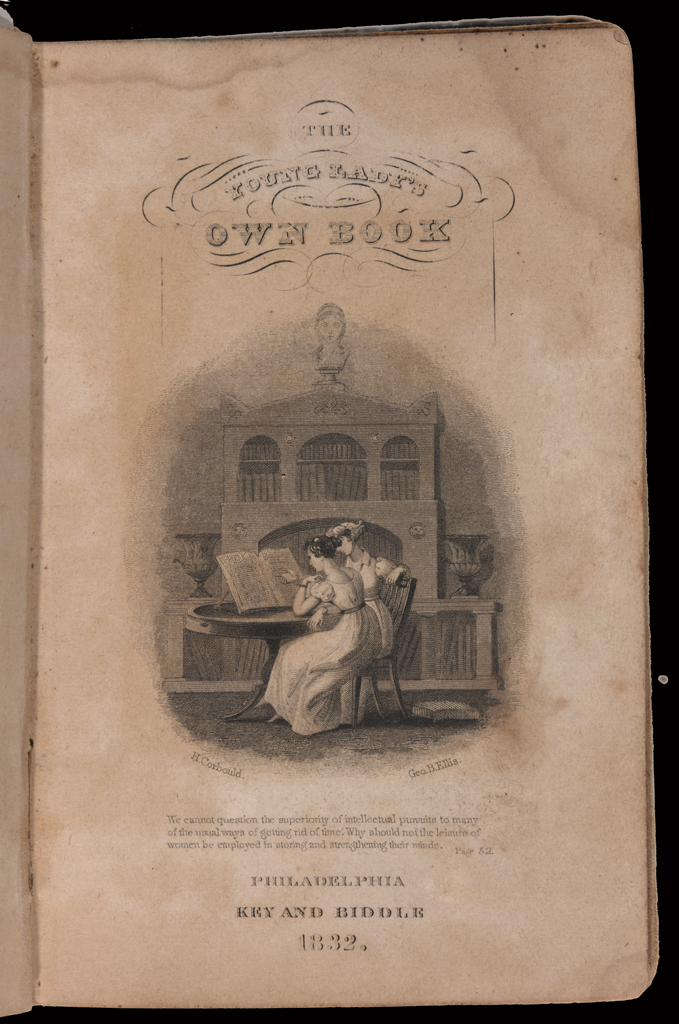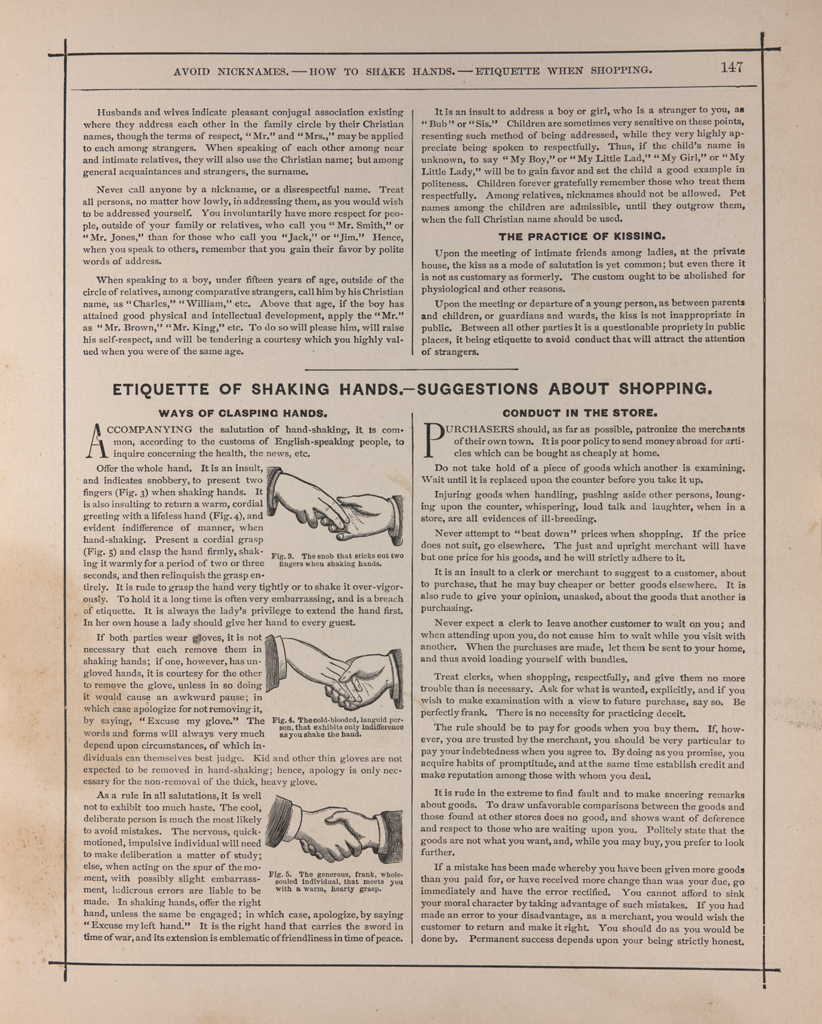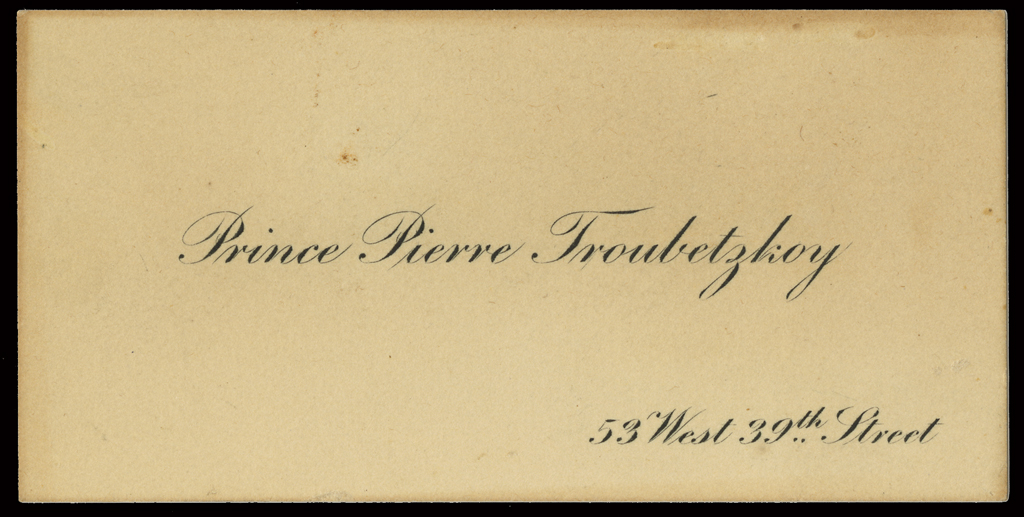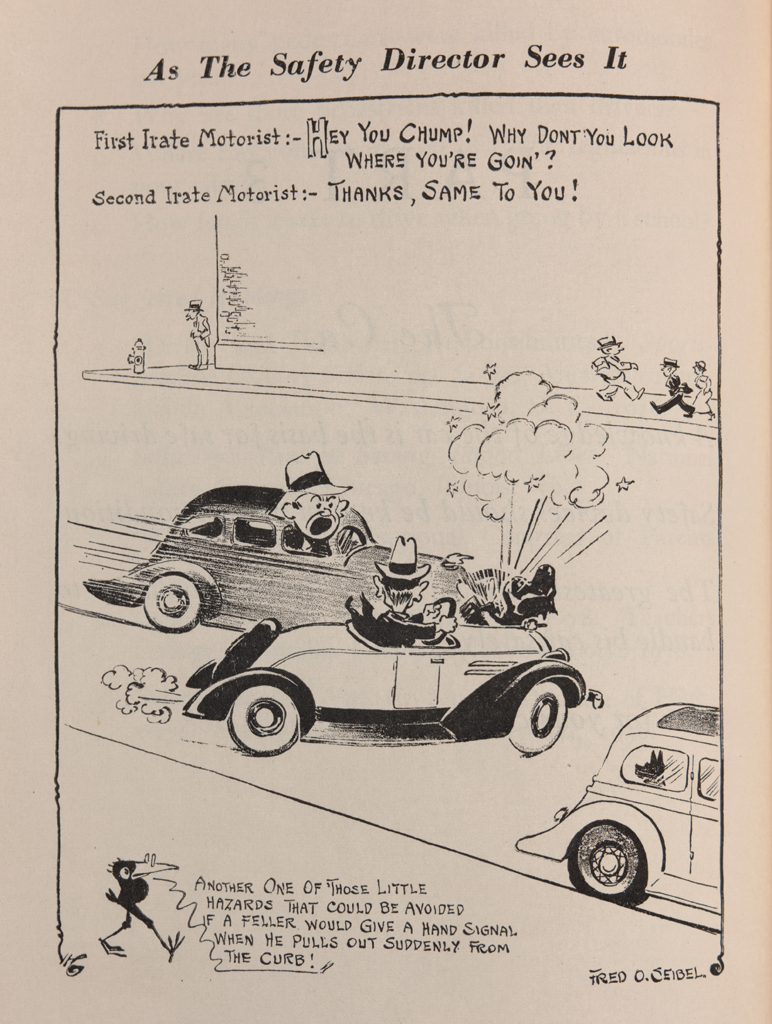"A Book Every Body Should Possess." This simple statement, presumably a publisher's marketing ploy to sell copies, highlights the importance placed on advice and etiquette books in the nineteenth century. The social upheaval of both the French and American Revolutions provided many low- and middle-class individuals social mobility. Education was an important vehicle for self improvement, and it was not limited to the esoteric. How people learned to negotiate the social obligations and interactions was equally important in their struggle to improve their conditions.
Studying etiquette books offers researchers a glimpse of how people interacted and how they adapted to their changing world. In his 1843 Gentleman's Science of Etiquette and Guide to the Usages and Habits of Society, Count Alfred D'Orsay appeals right away to men engaged in the pursuit of learning by evoking the science of etiquette. Important to D'Orsay were introductions, deportment at dinner, dress, dancing, conversation, and cards (calling cards and playing cards). In his notes of general society, D'Orsay describes at length how a man should acknowledge a lady of acquaintance in the street. He emphasizes that only if she acknowledges him should he then bow or take off his hat. If he acknowledged her first and she ignored him, which is her prerogative, "there would be no remedy."

